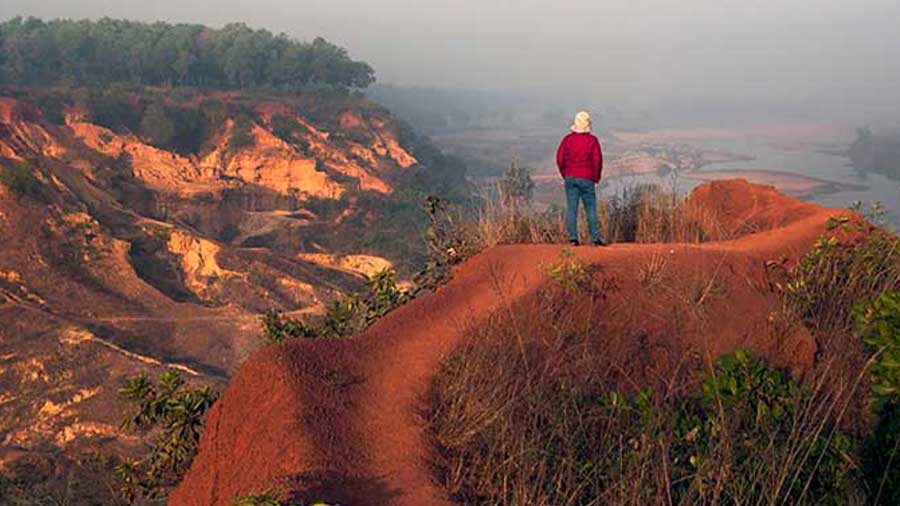A four-hour drive west from Kolkata takes you to Gongoni Danga, the ‘Grand Canyon’ of Bengal. It’s a strip of red rock land with sheer drops to the valley below, through which river Shilabati threads its way. Floury-white sandbanks interject the bluish waters, forming beautiful patterns on the river bed. One could even be forgiven for mistaking this West Midnapore terrain, where you are hemmed in by rows of jagged cliffs, for the Wild West.
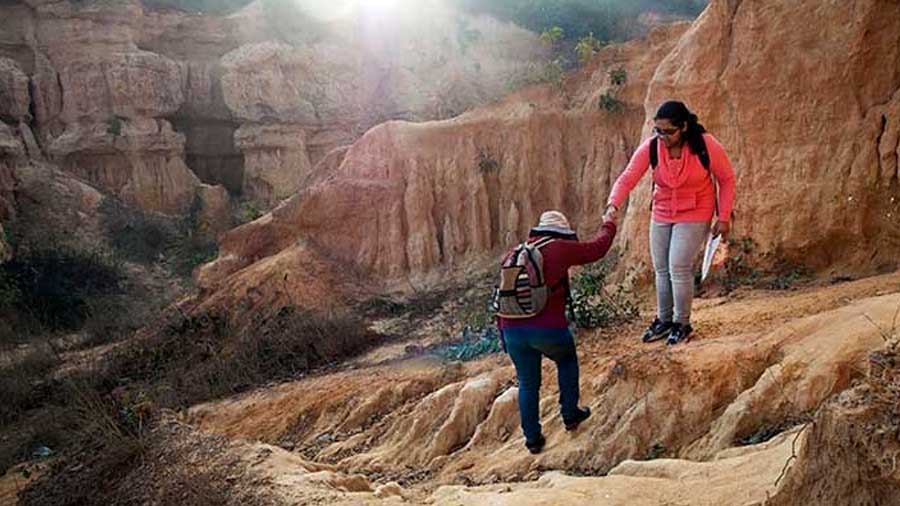
Tourists on a trail inside the canyon. Sugato Mukherjee
Roughly translated, Gongoni Danga means ‘red-hot land’. In the summer months, the laterite texture of the canyon seems to sizzle, and hence the name. The gorge was sculpted by river Shilabati over two periods of time. Geologists say that while the upper layers of Gongoni, with its rusty-red texture, date back to the Quaternary Period (about 2.6 million years ago); the lower segment with its characteristic sandstone and siltstone was carved by the river during the Tertiary Period (about 5 million years ago).
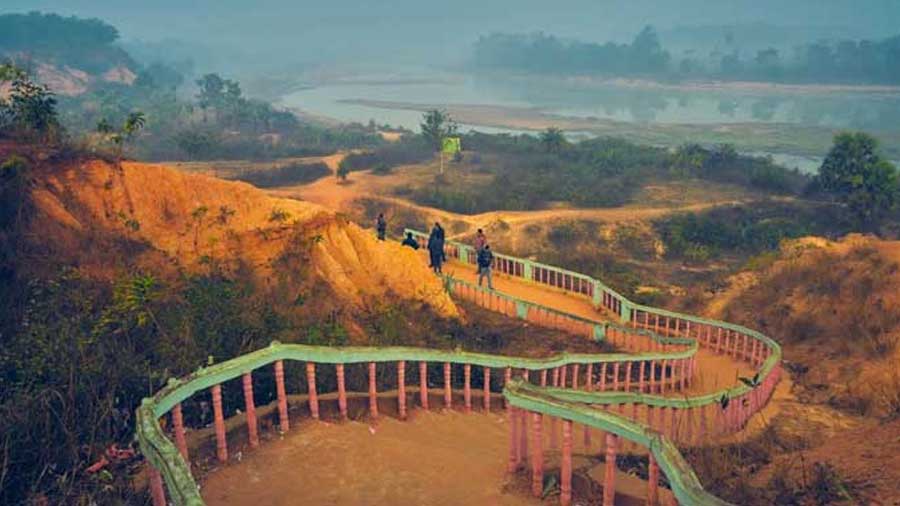
A staircase leads to the bottom of the canyon. Shutterstock
A staircase, built by the local municipality, winds its way into the depths of Gongoni. If the canyon looks magical from above, its rugged texture looks almost surreal from close quarters. Wind and water have collaborated over millions of years to chisel a landscape of forbidding splendour. Streaks of light filter in to illuminate the nooks and crannies and expose beautiful formations. One can also explore the meandering trails inside the canyon — the route through which the river had once carved its way.
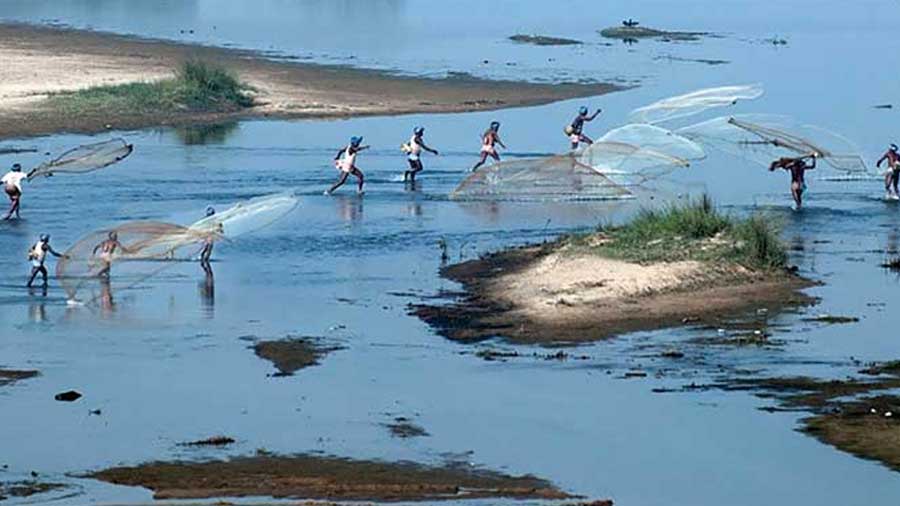
Community fishing on the Shilabati river. Sugato Mukherjee
River Shilabati also allows for Bengal’s tradition of community fishing. In the drier months, one can spot groups of fishermen wading through the ankle-deep river and throwing their handnets into the crystal clear waters.
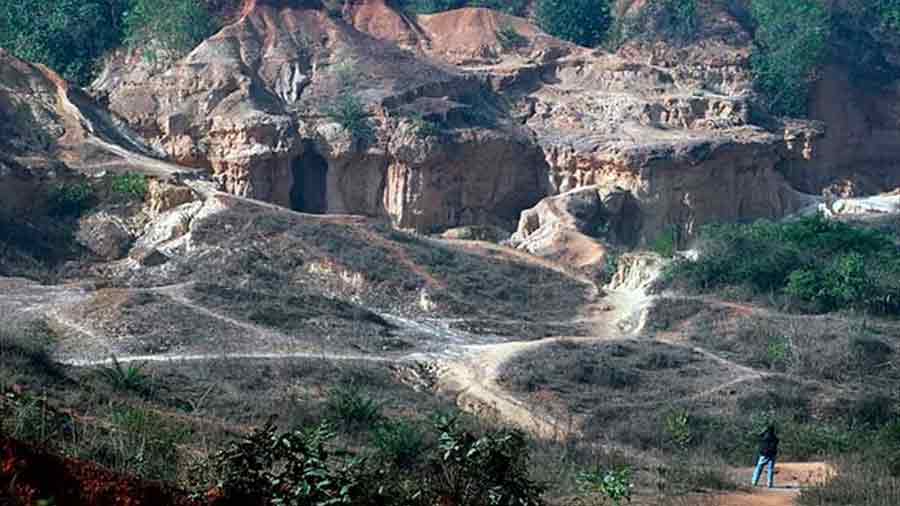
Bakasura’s cave is a popular attraction. Sugato Mukherjee
Among the bizarrely shaped structures of the landscape, pockmarked with caves hewn into the rockface, is a cave with carved pillars on its entrance. This is known as Bakasura’s cave. The cliff-side chamber comes with its own legend. According to folklore, it was the den of Bakasura, a fearsome demon, from the period of the Mahabharata. A prolonged battle here between the demon and the Pandavas’ Bhima, rattled the earth and left this land crumpled and battered.
How to Reach: Gongoni is a four-hour drive from Kolkata and can be covered as a day trip. But, it would be a better idea to base yourself at Bishnupur. The landscape is ideal for an early morning or late afternoon excursion from the temple town.
Where to Stay: Bishnupur, 27 km away, has many staying options. WBTDCL runs a clean and comfortable lodge at a convenient location and there are a couple of mid-range hotels in and around the town.
Sugato Mukherjee is a Kolkata-based photographer and writer whose work has appeared in The Globe and Mail, Al Jazeera and Nat Geo Traveller, among other places. He is the author of a coffee-table book on Ladakh and a book on the sulphur miners of East Java.
